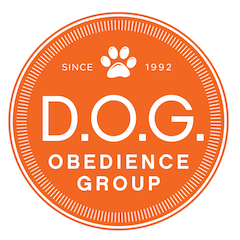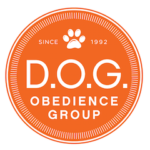Here are some of our most frequently asked questions. You’ll find a few pointers to help get your pup on the road to good behavior here.
- Reward-based training. There are numerous ways to train dogs. In addition, each animal has his/her own learning style and preferred motivators. AVSAB endorses training methods which allow animals to work for things like food, play, and affection that motivate them rather than techniques that focus on using fear or pain to punish them for undesirable behaviors. Look for a trainer who uses primarily or only reward-based training with treats, toys, and play. Avoid any trainer who advocates methods of physical force that can harm your pet such as hanging dogs by their collars or hitting them with their hands, feet, or leashes.
Research shows that dogs do not need to be physically punished to learn how to behave, and there are significant risks associated with using punishment (such as inhibiting learning, increasing fear, and/or stimulating aggressive events). Therefore, trainers who routinely use choke collars, pinch collars, shock collars, and other methods of physical punishment as a primary training method should be avoided. Because of its risks, punishment should only us used by a trainer who can fully explain the possible adverse effects (See AVSAB Punishment Position Statement on the AVSAB web site) and instruct owners in one-on-one sessions how to perform the techniques correctly.
Punishment should not be used as a general first-line approach. Instead trainers using punishment should discuss specifically which situations may call for its use. General use of such punishment assumes that animals always know exactly what humans expect of them and are willfully disobeying. In fact, animals are often disobeying because people have accidently reinforced the wrong behaviors or have not communicated clearly the appropriate behaviors. No learner wants to be in a situation where they have to consistently be afraid or making a mistake.
- Good teacher. A good instructor should explain what behavior they are training, why it is important, and then demonstrate it. In a class situation, they should provide ample time in class to practice and individually assist students. They should be able to adapt their humane training methods to the individual dog. Class sizes should be small to ensure individual attention, or assistants should be helping with the classes.
- Continual education. Look for a trainer who demonstrated continual self-education. A conscientious trainer will keep up-to-date with the new training theories and methods, and may attend workshops and conferences.
- Respectful. A good trainer should be personable and respectful of both you and your dog. Avoid trainers who recommend using physical force (e.g., alpha rolling, pushing a dog into position, hitting, choke chain or pinch collar correction) or methods/devices that have the potential for harm, as an acceptable way to train. Additionally, avoid trainers who make you feel bad about the speed of progress that your dog is making. (See AVSABPunishment Position Statement on the AVSAB web site).
- Observe a class. Always ask to observe a class before attending. You need to make sure that the teaching style of the instructor will work with how you learn. Also, watch the students and their dogs. Do they look like they are having fun or are they looking stressed? Are dogs tails up and wagging or down and/or tucked? Are the people talking with their dogs in happy, upbeat voices or are they scolding or even yelling at them? Talk to current students – are they enjoying the class and feel that their dogs are learning? If a trainer does not allow you to observe a class, ask yourself (and the trainer) why.
- Do you feel comfortable? Ultimately, you should feel comfortable doing whatever it is the trainer asks you to do to your dog. If your trainer ever tells you to do something to your dog that you believe will cause you or your dog undue harm or distress, ask them to explain why they recommend that technique, what the potential drawbacks of the techniques are and how these will be addressed should they occur alternately, you could ask for another option.
- There are no guarantees. Because of the variable and often unpredictable nature of behavior, a conscientious trainer cannot and will not guarantee the results of training. However, they should be willing to ensure satisfaction of their services.
- Vaccinations. A good instructor will take care to protect the dogs in a class.
- Problem behaviors. When dealing with problem behaviors, such as biting and fighting, destructiveness, etc. a good trainer should feel comfortable collaborating with your veterinarian and should know when to seek help from other professionals. Many behavior changes are caused by underlying physical problems, and a proficient trainer may ask you to visit your veterinarian for medical testing. In addition, many behavior problems are actually medical disorders that require diagnosis and treatment by a veterinarian. Your veterinarian may consider adding medication to your pets behavior modification plan once your pets situation has been completely assessed. Unless a trainer is a veterinarian, he/she does not have the medical background to recommend specific medications or to assess the possible risks and benefits of using medications in individual animals.[/su_spoiler]

